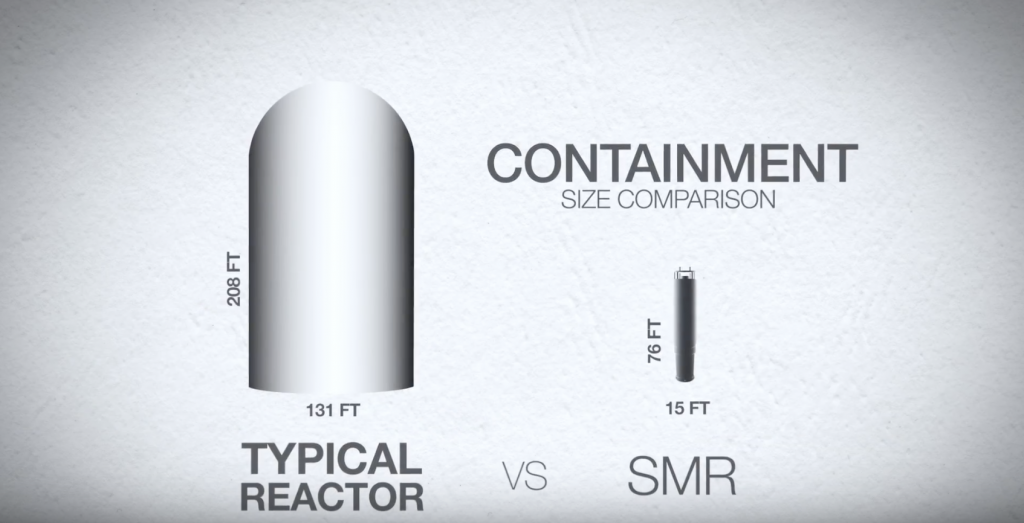
As a member of the Utah Associated Municipal Power Systems (UAMPS), Logan City is now weighing whether to continue its participation in an increasingly expensive nuclear power project.
LOGAN – Members of the Logan City Council are weighing whether to cut their losses or bet the bank on an increasingly expensive nuclear power project.
As a member of the Utah Associated Municipal Power Systems (UAMPS), Logan City owns a partial interest in a first-of-its-kind nuclear plant proposed to be constructed at the Idaho National Laboratory.
Logan now faces a Sept. 15 deadline to ante up more funding or withdraw from the project, according to Mark Montgomery, the city’s Light and Power director.
At their regular meeting Tuesday evening, Montgomery told city council members that Logan has invested $256,000 in the Budget and Finance phase of the Small Modular Reactor (SMR) project so far. If the city opts to continue its participation in the project into its initial Licensing phase through 2023, the price tag will be another $654,000.
Earlier on Tuesday, the Utah Taxpayers Association urged Utah cities to reconsider their participation in the SMR project.
“This UAMPS project will lock in 34 municipalities in Utah for a share of billions of dollars in costs and unclear risks in the pursuit of a cluster of small modular reactors,” said Rusty Cannon, the vice president of the taxpayer association. “This project is being touted by NuScale Power of Oregon, which has repeatedly delayed and increased costs associated with the reactor project.”
Cannon argued that the SMR project is also a dubious civic investment because “the project is being conducted largely out of the public eye” because UAMPS is exempt from the Utah public meeting law.
UAMPS is a political subdivision of the State of Utah that provides power, transmission and other electrical services on a non-profit basis to member cities in Utah, California, Idaho, Nevada, New Mexico and Wyoming.
Montgomery explained that Logan and other Utah cities (including Brigham City and Hyrum) are partnered through UAMPS with NuScale, Flour Corporation Worldwide Construction and the U.S. Department of Energy in the Carbon Free Power Project (CFPP).
The goal of that project is to design and construct the next generation of nuclear power plants, a small modular reactor that would provide 720 magawatts of electricity, enough to power 720,000 homes. The CFPP plan calls for the first SMR to come online in 2029, with 11 more to follow.
Montgomery admitted to city council members that he shares some of the same concerns about the SMR project as the Utah Taxpayers Association.
In the original CFPP proposal, the U.S. Department of Energy was to foot the bill for the development of the project’s first module. After pledging up to $1.4 billion for those expenses, federal officials have since backed out of that agreement, leaving UAMPS holding the bag for the project’s first-of-its-kind risks.
Montgomery added that estimated costs of the project have also escalated since 2017, jumping from $3.6 billion to $6.1 billion as of July of this year.
Peter Bradford, a former member of the U.S. Nuclear Regulatory Commission, believes that UAMPS’ enthusiasm for the SMR project may be misguided.
Speaking at an online press conference hosted Tuesday by the Utah Taxpayers Association, Bradford emphasized that, of 31 nuclear power projects pending before the NRC in 2009, only two remain in progress. The others were abandoned, resulting in the loss of taxpayers’ investments.
But the potential value of the SMR project cannot be judged strictly in terms of dollars and cents, according to Matt Draper, the power superintendent for the city of Hyrum, which is also a member of UAMPS and a partner in the reactor project.
Draper explains that UAMPS now provides Hyrum’s electricity from coal-fired, steam electric, hydroelectric, gas-fired, solar and wind-powered generating plants. Since coal and gas are increasing falling out of public favor, the development of alternative energy sources, including nuclear power plants, are an investment in dependable future energy supplies.
Given the current estimated cost of $6.1 billion for the SMR project, Montgomery warned that Logan’s investment in the project could soar to more than $21 million during the second phase of the project’s licensing period from May of 2023 to November of 2025.
The city power director added that Logan’s options at the present time are to increase or decrease its investment in the SMR project, withdraw entirely from the project or continue its participation in the nuclear development effort.

